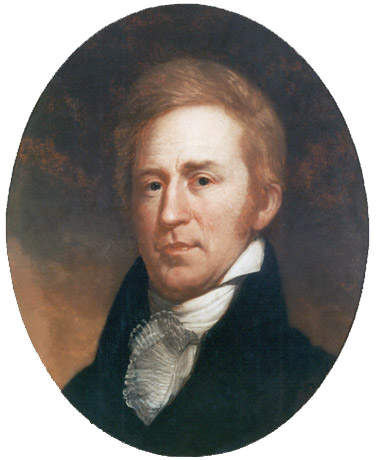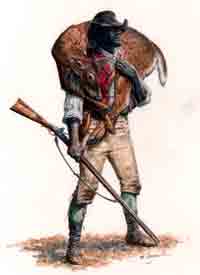Kentucky People
Kentuckians made indispensable contributions to the success of the Lewis and Clark Expedition. Fully half the members of the Corps of Discovery were Kentuckians or had Kentucky connections. This section includes biographies of expedition co-leader William Clark, his enslaved African-American York, the Nine Young Men from Kentucky, and others with Kentucky ties to the expedition, as well as articles and other information.
William Clark
As the younger brother of Louisville founder George Rogers Clark, he served as co-leader of the Lewis & Clark Expedition. The Clark family settled in Jefferson County in 1785 when William was fourteen years old. For the next eighteen years the family farm, Mulberry Hill, was his home. During those years he grew to manhood on the frontier, learning many of the skills that would serve him so well for the expedition. From 1792 to 1796 he served as a lieutenant in the United States Army. On July 18, 1803, he accepted his friend Meriwether Lewis’s invitation to join him as co-leader of the western expedition.

York
Born the slave of the famous Clark family, York became famous in his own right. Moving to Kentucky from Virginia with the Clarks in 1785, York experienced frontier living, extensive travel, and life as the personal servant of William Clark. In 1803 he left the Falls of the Ohio as an unofficial member of the Lewis and Clark Expedition. While on the Expedition, York served as William Clark’s and Meriwether Lewis’s servant, hunted, and performed other duties.

George Drouillard
George Drouillard (ca. 1775-1810) was one of the most important members of the Corps of Discovery. The son of a French Canadian father and Shawnee mother, Drouillard grew up in Ohio and the Detroit area. It is also likely that he visited Kentucky on any number of occasions. His hunting and tracking skills were superior and Lewis paid him high praise at the end of the journey. Drouillard was a civilian member of the Corps. He met Lewis and Clark in November at Fort Massac, on the lower Ohio River. He was living at Massac Village and in the Cape Girardeau District of Missouri.

Samuel Brown, M.D.
Samuel Brown was born in 1769 in Rockbridge County, Virginia. He received his medical degree in 1794, and in 1797 he moved to Lexington, Kentucky. In 1799 he was named a medical professor at Transylvania University in Lexington. Brown was a leader in his field; he was elected to the American Philosophical Society in 1800, and was a pioneer in the inoculation of smallpox.

Nine Young Men from Kentucky
Other Kentuckians with Lewis and Clark
Historical markers
The “Lewis and Clark in Kentucky” historical markers project commemorates many of the significant people and places connected to the expedition.
